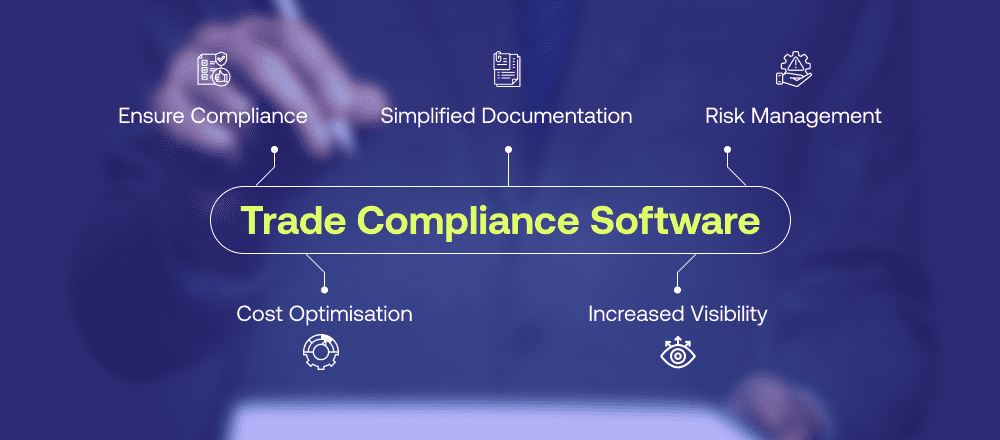
Customs brokerage software simplifies the complex process of managing import and export compliance, helping brokers and importers handle documentation, tariffs, and regulations efficiently. It provides automation, real-time filing, and integration with customs authorities, reducing errors and speeding up clearance times.
This software also offers features such as inventory tracking, AI-driven data extraction, and seamless communication with customs systems, making international trade more transparent and manageable. Users benefit from digital workflows that reduce manual tasks and improve accuracy throughout the customs process.
As global trade regulations evolve, adopting advanced customs brokerage tools becomes critical for maintaining compliance and optimizing operations. The right software can help brokers and freight forwarders adapt quickly while focusing on delivering better service.
Core Features of Customs Brokerage Software
Customs brokerage software focuses on enhancing efficiency and accuracy in handling international shipments. It accomplishes this by automating key processes, ensuring regulatory adherence, and enabling smooth communication with customs authorities.
Automated Customs Documentation
The software automates the creation and submission of customs documents such as declarations, invoices, and shipping manifests. By using data extraction and integration tools, it reduces manual entry errors and shortens processing times.
Automation also supports accurate HS code classification, tariff calculations, and duty assessments, which are essential for compliance and cost control. This feature helps brokers prepare correct and complete paperwork quickly, avoiding delays or fines at customs checkpoints.
Most systems provide templates and real-time validation checks to ensure documents meet the latest regulatory standards before submission.
Compliance Management Tools
Customs brokerage software integrates compliance management by continuously updating trade regulations and incorporating them into workflows. This reduces the risk of non-compliance penalties and shipment holds caused by evolving international laws.
It includes features like risk assessment alerts, audit trails, and scenario testing for various trade scenarios. These tools help brokers maintain adherence to laws such as ISF, AMS, and AES filings, which are critical for U.S. imports and exports.
By monitoring regulatory changes automatically, the software ensures brokers and their clients stay informed and compliant throughout the customs process.
Electronic Data Interchange (EDI) Integration
EDI integration enables seamless data exchange between customs brokers, carriers, freight forwarders, and government agencies. This real-time connectivity accelerates customs clearance by eliminating manual data re-entry.
Customs brokerage software supports multiple EDI standards and protocols, facilitating communication with customs authorities worldwide. It transmits shipment details, customs declarations, and status updates instantly.
This integration increases transparency, allowing brokers and clients to track shipments and costs in real time. It also reduces errors common in manual data handling and supports faster decision-making during customs processing.
Choosing the Right Customs Brokerage Software
Selecting the proper customs brokerage software requires attention to how well it fits within existing workflows, how easily users can navigate it, and its capability to grow with a business. These factors directly impact efficiency, compliance, and long-term cost-effectiveness.
Integration With Existing Systems
Customs brokerage software must seamlessly connect with a company’s current technology stack. This includes Enterprise Resource Planning (ERP) systems, warehouse management, and shipping platforms. Smooth data exchange eliminates manual re-entry and reduces errors.
Compatibility with government customs databases and trade compliance tools is essential. The software should support electronic filing and real-time updates from customs authorities. These functions ensure accurate duties and tax calculations and timely submissions.
APIs and standardized data formats enhance integration possibilities. Companies should verify that the software can easily connect with supplier and carrier systems to maintain end-to-end visibility throughout the supply chain.
User Experience and Interface
A clear, intuitive interface reduces training time and errors for customs brokers and support staff. The software should present complex regulatory data in straightforward formats, such as dashboards and alerts.
Customization of views and workflows tailored to specific roles improves efficiency. Drag-and-drop features and automated document generation can simplify routine tasks, preventing bottlenecks.
Mobile accessibility is increasingly valuable, allowing users to monitor shipments and compliance remotely. Responsive design and easy navigation tools are important for daily use without frustration or delays.
Scalability and Customization Options
Businesses involved in global trade often experience fluctuating shipment volumes. Choosing software that scales smoothly prevents disruptions during growth or seasonal spikes.
Customization features allow companies to adapt the software to specific trade rules, product categories, and reporting requirements. Flexible rule engines and automated classification tools help maintain compliance as regulations evolve.
The ability to add modules such as AI-driven analytics or supply chain visibility tools supports future needs without replacing the entire system. Subscription-based or modular pricing models also provide cost control aligned with usage.
